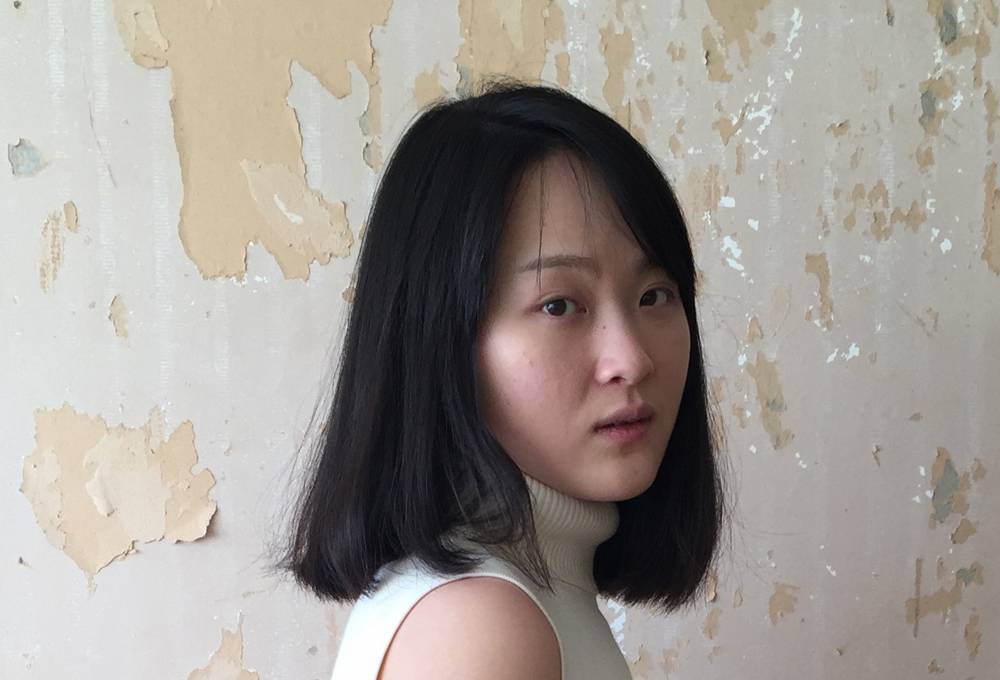There are two major research projects, during which I organised and directed two solo performances and exhibitions at the Royal College of Art. I secured fundings for both projects in terms of the 3D printing production and other costs.
In the project 'Inter-fashionality', I collaborated with Professor Yingjun Li Tsinghua University and designed the 3D-printed fashion performance as well as exhibition, which were fully sponsored by Beijing Fashion Institution and BMW (Bayerische Motoren Werke) Intangible Cultural Heritage Protection Innovation Center. I led a team of 11 experts, including stage designers, dancers, choreographer, lighting designers and technicians. We delivered a 20-min performance and a week-long exhibition.
Following the concept, in the project 'Fold-the-Interfashionality', I collaborated with Assistant Professor Tsai-chun Huang (Hong Kong Polytechnic Unversity) to design 3D-printed and pleated costumes for Beijing Opera. I applied 3D printing in performance featuring the Easter design element - Beijing Opera this time. Since I have kept good connections with 3D printing industry, the project was fully sponsored by advanced SLS 3D printing company Sinterit. As the director of this performance, I worked with assistant professor Tsaichun Huang (Hongkong Polytechnic University) and managed a team of 12 people. We delivered a 15 mins performance and a week-long exhibition at the RCA. There was an audience of 102 attending the performance from the RCA, the V&A museum, Imperial College, UAL, Oxford University, Cambridge University, Zaha Hadid architectural firm, H&M and Vivienne Westwood design studio.
I self-curated and organised a conference Digital Fashion - 3D Printing for Designers at the RCA(https://www.rca.ac.uk/news-and-events/events/digital-fashion-3d-printing-designers/), during which designers from Zaha Hadid, researchers from ArclnTex and Nottingham Trent University and business representatives from the 3D printing industry, iMakr and Stratasys, came to the event.
I organised 1) the Far-Eastern Study Group at the Royal College of Art and 2) the Aboundary design community to explore the potentials of cultural exchange of Eastern-Western design and research practice. The outcome including the self-curated exhibition ELSEWHERE at the Royal College of Art (2015).
I also had the experience of organising a practice-based research community for researchers who are investigating practice-based fashion and textile projects. I collaborated with research colleagues Eve Lin, Tsai- chun Huang and Victoria Geaney at the Royal College of Art to build a fashion and textile research community, and at the same time invited and exchanged research knowledge with other design research communities, such the Fashion Research Network (https://www.fashionresearchnetwork.com/) and the Association of Fashion and Textile Courses (http://www.ftc-online.org.uk/). We organised a fashion and textile research Work-in-Process show in 2014 and 2015, as well as a conference titled ‘Progress in Research: Play, Pause, Forward and Reward', on 13 January 2017.
Beyond the institutional educations, I have disseminated these works (with ethical permission of the stakeholders) to a broader and creative community, included designers (fashion, textiles, architecture, product design and interactive designer, etc.), artists (performance artist, photographer, etc.), craftsman/makers, 3D printing technologists, material scientists, engineers and investors. These activities can develop collaboration opportunities; at the same time, I share the event information as much as I could with my students, so that they will have the access to the connections or job opportunities.



Social media